Startseite » Expertise » How SLS plastic 3D printing works
The SLS 3D printer uses a laser as an energy source. This laser selectively melts a powdered plastic material to create a 3D-printed component layer by layer. SLS is a powder-bed-based laser melting process and one of the most advanced and reliable 3D printing technologies in the field of additive manufacturing with plastics.

SLS technology in three steps:
Selective laser sintering is very common in the field of plastic-based additive manufacturing. This is largely due to the superiority of SLS technology in terms of design freedom, high productivity and low unit costs. Unlike other 3D printing technologies such as stereolithography (SLA) or fused deposition modelling (FDM), the SLS 3D printer does not require any additional support structures for component production. As a result, it is able to produce particularly complex, almost impossible 3D printing results. The production of the SLS 3D components only requires powder and energy and no binders.
SLS can be used to produce high-performance moulded parts for industrial use, e.g. with glass bead fillings, aluminium components or flame-retardant chemicals. Typical requirements include gear wheels, pump impellers or drive wheels for high-pressure systems.
It is also possible to manufacture medical devices and patient-specific implants from sterilisable and biocompatible materials. These are more cost-efficient than metal implants.
SLS offers a cost-effective alternative for small and medium-sized series production of 3D-printed plastic components. These include, for example, plastic housings or spare parts from the SLS 3D printer.
SLS enables the production of 3D-printed components with directly integrated functionality. Plastic components from an SLS 3D printer impress with their lightweight structure and can be produced cost-effectively and customised. These properties make them ideal for use in prototype construction or even for robotic components and gripper systems.
Lightweight suction cups
Showcase of an intake manifold for V6 pickup engine

Would you like a personalised offer or advice?
Get in touch with us!

FKM is a pioneer in selective laser sintering (SLS) and selective laser melting (SLM) in Germany and Europe. Since 1994, we have been part of a revolutionary rethinking process in the industry. Where tool and mould making used to determine the design rules, additive manufacturing with SLS and SLM is now changing entire production processes.
Sign up for our newsletter and receive free innovation news about industrial 3D printing.
Sie haben Fragen?
Nehmen Sie zu uns Kontakt auf.
Do you have any questions?
Please get in touch with us.